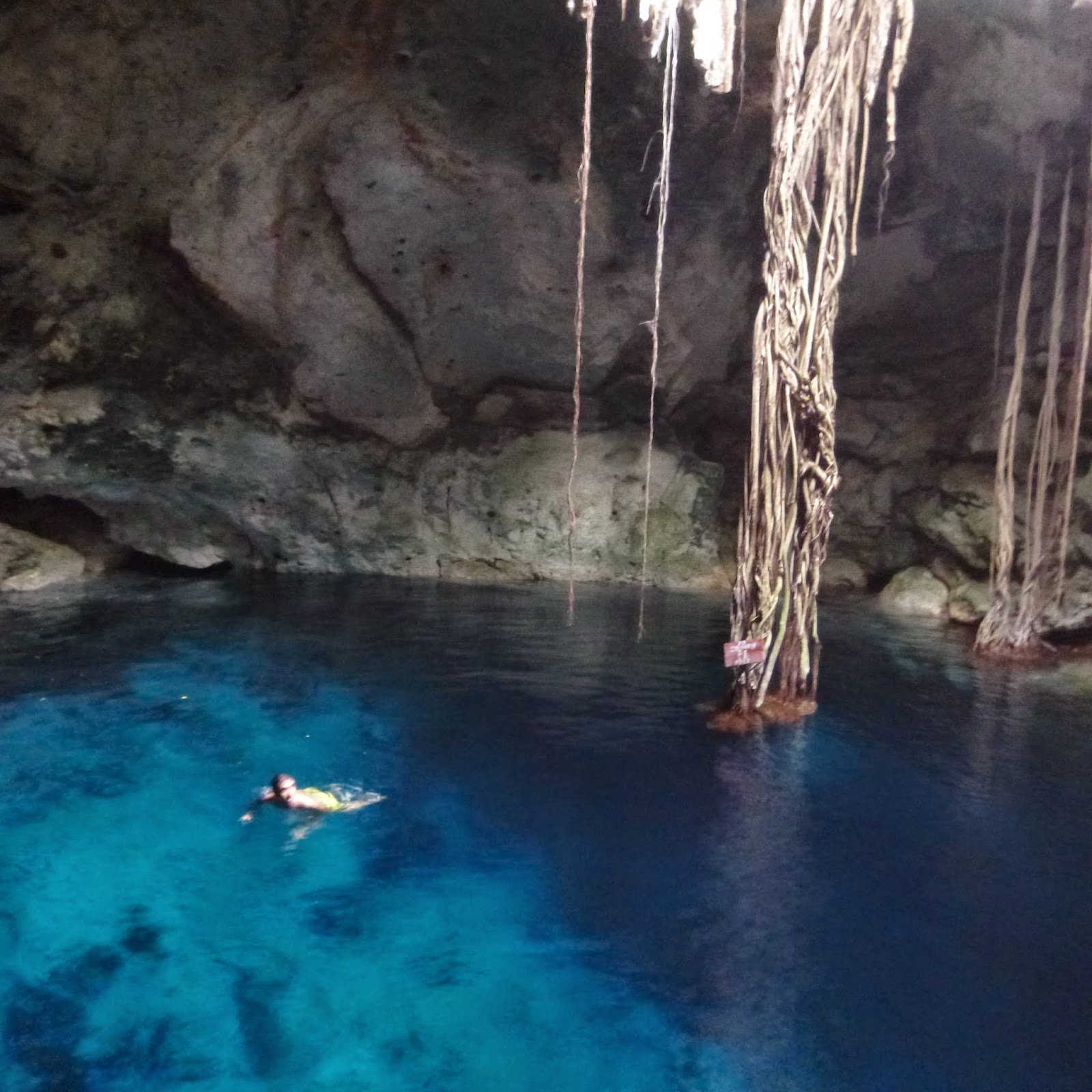We were happy to be invited by our friends, Edwin and Mariana, the other day to a party at their family house in Cedral. We're sure we talked about Cedral before but the story intrigues us. Who knows, maybe the story may have changed sinced the last time we relayed it. Cedral is about 15 miles south of where we live in San Miguel. It's the first town established by the Mestizos (people with both Spanish and Mayan ancestries) who were running from the Mayans in the Caste War of the mid 1800's. We'll digress even further to say that the Mayans were just about to win the war by overtaking Merida when they realized it was time to plant their crops. They, being the smart people they were, just laid down their weapons and went home to their frams! And that, was the end of the war. Needless to say, they lost.
There were 17 original families of Mestizos who made Cozumel their home. They built their houses in the jungle by Mayan ruins. This must be a good place, right? It was and is! Lots of land to grow crops, lots of water from a huge cenote underground and inland from the ocean where hurricanes do their heavy lifting!
The land and the homes have been handed down through the generations. The tradition up until recently was to keep these places in the families.
Back to the party.....Edwin seemed to be firm on the time. Really be there at 4:00 PM (American time) not 8PM (Mexican time) . We did a pretty good job and when we arrived Edwin was missing but his brother, Roman, was there enjoying some cervesa. To our surprise and Roman's as well, we had been invited to his birthday party. Well good, we brought some beautiful mangos, coconut ice cream and, of course, Tecate Light. Roman seemed a little concerned about the mangos but being the consummate host, he offered us beers and a seat. When Edwin and Mariana arrived about a 1/2 hour later (really, that's early in Cozumel time), Mariana explained the the mango mystery.
Apparently, veteran drinkers in Cozumel don't mix certain fruits and beer for fear of getting out of control drunk and suffer a hangover that's guaranteed. So what to do with the fruit? After much pondering it was decided that the fruit wouldn't do its voodoo if there was chili sprinkled on it. The search was on for chili. Since Edwin's grandma died a few years ago, no one lived in the house. Edwin and Mariana went through some pretty old jars of mysterious herbs. Edwin had decided on one that Mariana was sure smelled like some earth. As she was throwing out the contents of the jar, Edwin remarked that just maybe it was some of Grandma's ashes. We're pretty sure that she would enjoy the party now that she was released.
After eating the best tacos topped with pork that had been grilled, pico de gallo, and, you guessed it, mangos together with pumpkin seed and cheese/garlic dips and a small walking tour of the town proper, it was time for us to go home. This just as the party was getting started. We drove by one of the original houses now owned by Edwin's aunt. When the gate you see in the front is open, you know you're welcome to come through the house to the back where she's cooking something delicious.
We took a road and were on our way out of town when we came to a chain stretched across the road . The policeman posted there said it wasn't an exit. So we backed up and picked another road that had a gate across it. The same policeman walked about 50 feet around the corner and lifted the gate for us. Nice waves were exchanged and our scene out of Monty Pithon came to a close!
Our friends and neighbors, Chuck and Moni, are always working on some creative project. Their house is now officially named "Casa des Pescas" because they have a very large school of these fantastic fish they make. Last week, we were talking about our favorites and they gave us one. YES! Love this buddy.
Chuck and Moni do mosaic, Ed landscapes, paints, fixes everything and cooks up a storm. What does Peggy do? She loves to Zentangle. That's it! More than enough.
























































